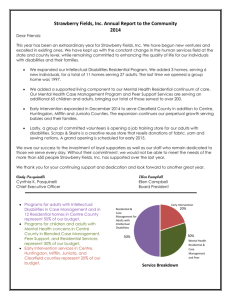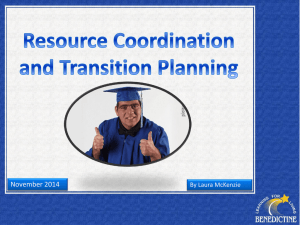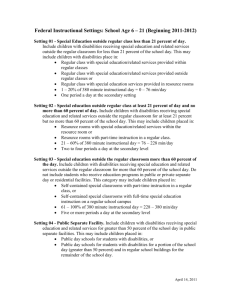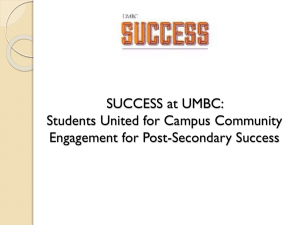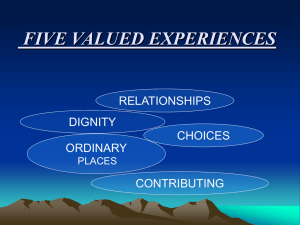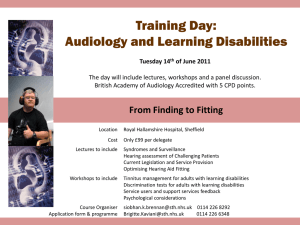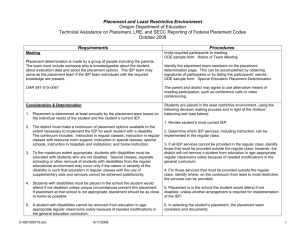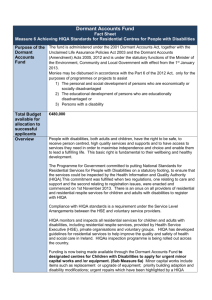Educational Environments Pt B Qs and As
advertisement
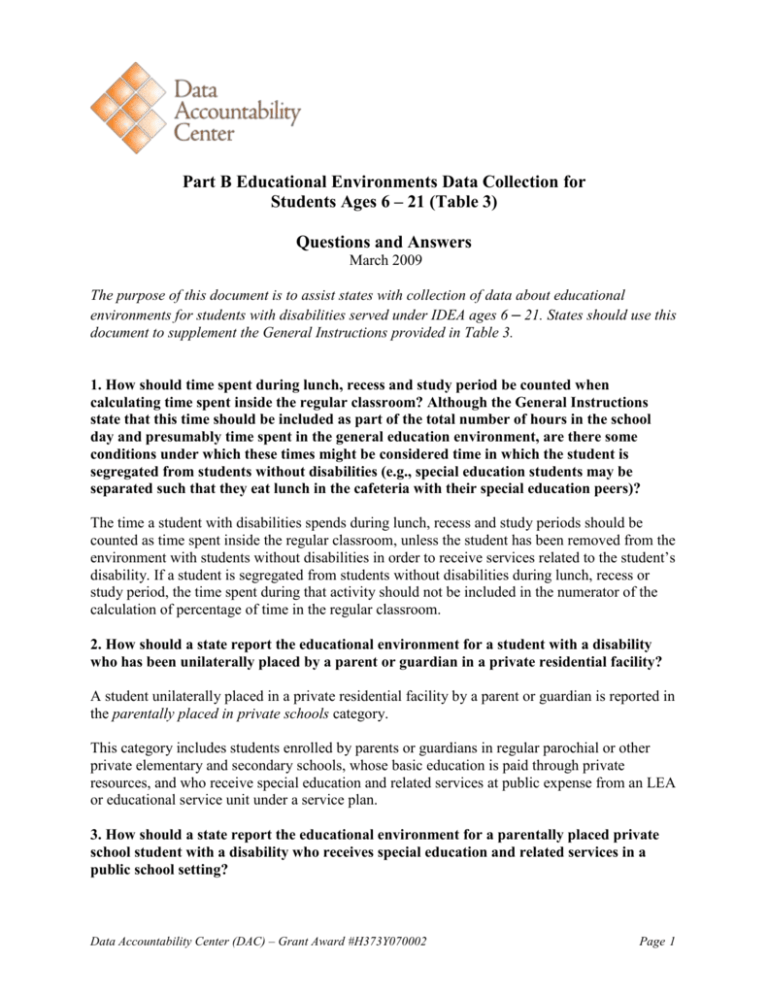
Part B Educational Environments Data Collection for Students Ages 6 – 21 (Table 3) Questions and Answers March 2009 The purpose of this document is to assist states with collection of data about educational environments for students with disabilities served under IDEA ages 6 – 21. States should use this document to supplement the General Instructions provided in Table 3. 1. How should time spent during lunch, recess and study period be counted when calculating time spent inside the regular classroom? Although the General Instructions state that this time should be included as part of the total number of hours in the school day and presumably time spent in the general education environment, are there some conditions under which these times might be considered time in which the student is segregated from students without disabilities (e.g., special education students may be separated such that they eat lunch in the cafeteria with their special education peers)? The time a student with disabilities spends during lunch, recess and study periods should be counted as time spent inside the regular classroom, unless the student has been removed from the environment with students without disabilities in order to receive services related to the student’s disability. If a student is segregated from students without disabilities during lunch, recess or study period, the time spent during that activity should not be included in the numerator of the calculation of percentage of time in the regular classroom. 2. How should a state report the educational environment for a student with a disability who has been unilaterally placed by a parent or guardian in a private residential facility? A student unilaterally placed in a private residential facility by a parent or guardian is reported in the parentally placed in private schools category. This category includes students enrolled by parents or guardians in regular parochial or other private elementary and secondary schools, whose basic education is paid through private resources, and who receive special education and related services at public expense from an LEA or educational service unit under a service plan. 3. How should a state report the educational environment for a parentally placed private school student with a disability who receives special education and related services in a public school setting? Data Accountability Center (DAC) – Grant Award #H373Y070002 Page 1 This case fits the parentally placed in private schools category, as the student is enrolled by a parent or guardian in a regular parochial or other private elementary and secondary school and whose basic education is paid through private resources and receives special education and related services at public expense from an LEA or educational service unit under a service plan. 4. How should a state report a student who is placed by court order in a residential mental health facility (other than a hospital) and is receiving special education and related services under an IEP in that setting? If the residential facility is only for students with disabilities, report the student in the residential facility category. If the residential facility is for students with and without disabilities, since the placement is for mental health purposes, the best option would be to report the student in the homebound/hospital category. 5. How should a state report the educational environment for a student who is placed in a short-term public residential placement (e.g., less than a week) on the child count date? On the child count date, if the student is in a residential facility for students with disabilities at public expense, even if the duration of that placement is intended to be short-term, the student should be reported in the residential facility category. 6. Would the reporting of the educational environment for a student placed in a correctional facility vary depending on whether the student is receiving special education and related services in a one-on-one setting versus a small-group setting of peers with and without IEPs? No. In either situation, a student who is receiving special education and related services in a correctional facility should be reported in the correctional facilities category. 7. How should a state report the educational environment for a student with a disability who attends an alternative school or participates in an educational program in an alternative setting for students with and without disabilities within a regular public school? Educational time spent in age-appropriate settings that include students with and without disabilities should be considered time spent inside the regular classroom. 8. What is the difference between “educational environment” and “placement?” The term “placement” is no longer used in the Part B Educational Environments data collection form. Starting with the revisions incorporated in the 2006-07 Part B Educational Environments data collection form, the collection references only “educational environment.” The Part B Data Dictionary defines educational environment as, “…a classification that indicates the extent to which students and children with disabilities who are receiving services under IDEA Part B, attend educational programs with their nondisabled peers. For children and students who do not attend educational programs with a majority of nondisabled peers, the educational environment reflects the setting in which they receive special education and related services.” Data Accountability Center (DAC) – Grant Award #H373Y070002 Page 2 Placement was formerly defined as, “The location where a special education program is provided.” 9. What is meant by “public expense” in the instructions regarding separate school and residential facility?” Does the term apply only to LEAs or any public agency? The term “public expense” means that the placement is paid for by any public agency, including noneducational public agencies. Note, however, that the categories separate school and residential facility apply only to public and private schools that are only for students with disabilities. 10. How should a state calculate the percentage of time inside the regular classroom when a student has a shortened school day? In calculating the percentage of time that the student spends inside the regular classroom, the denominator should include the total number of hours in the student’s school day. If a student does not attend for a full school day, the calculation should include only the number of hours that the student attends school. 11. How should a state report the educational environment for a student who participates in vocational program(s) that are supervised by the LEA? Does the reporting category vary depending on whether the program provides special education support to the student? As specified in the General Instructions for Table 3 (page 8 of 11), educational time spent in ageappropriate community-based settings that include individuals with and without disabilities should be counted as time inside the regular classroom when calculating the percentage of time spent inside the regular classroom. This is true regardless of whether special education support is provided to the student in this setting. Data Accountability Center (DAC) – Grant Award #H373Y070002 Page 3
